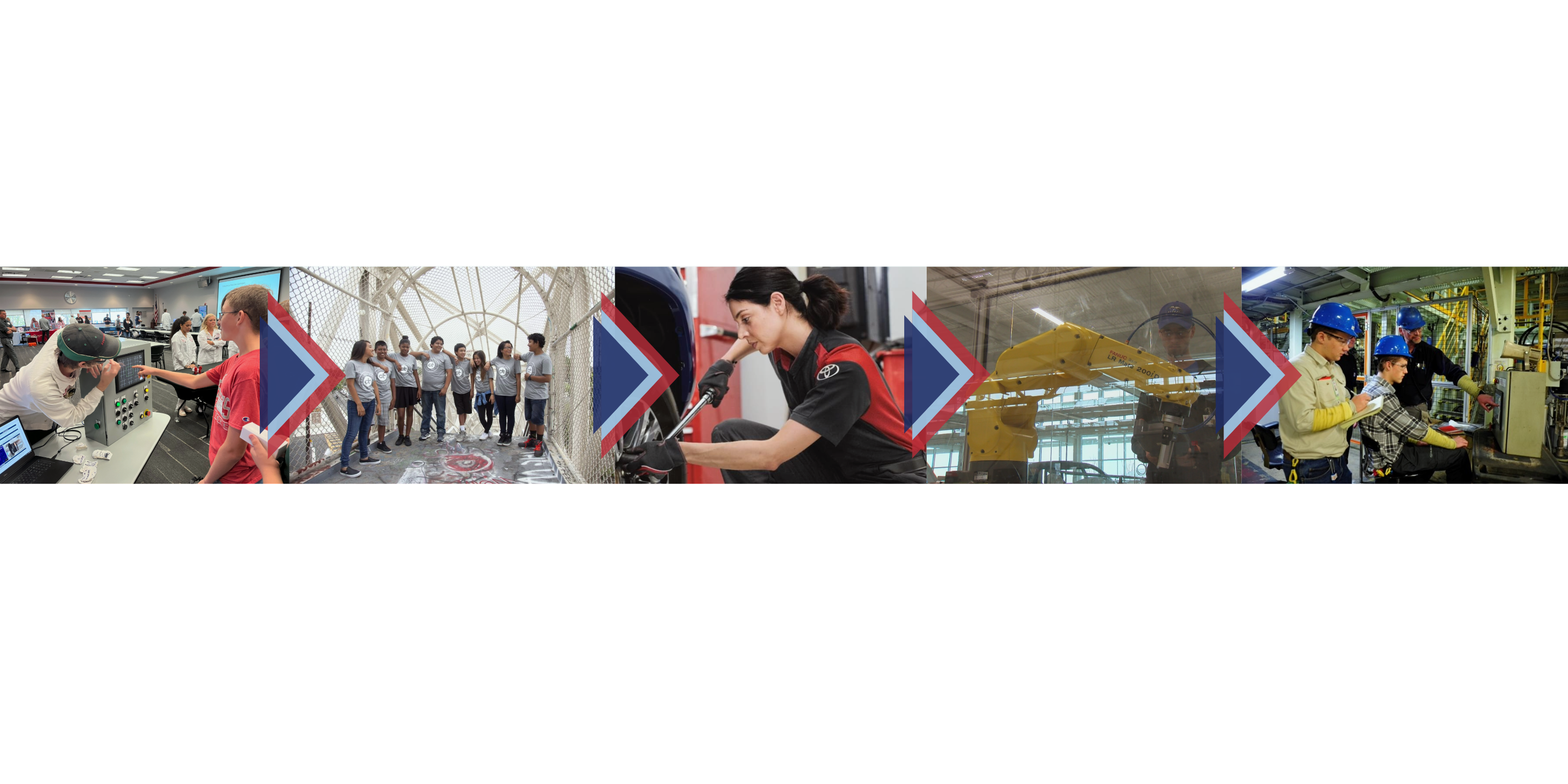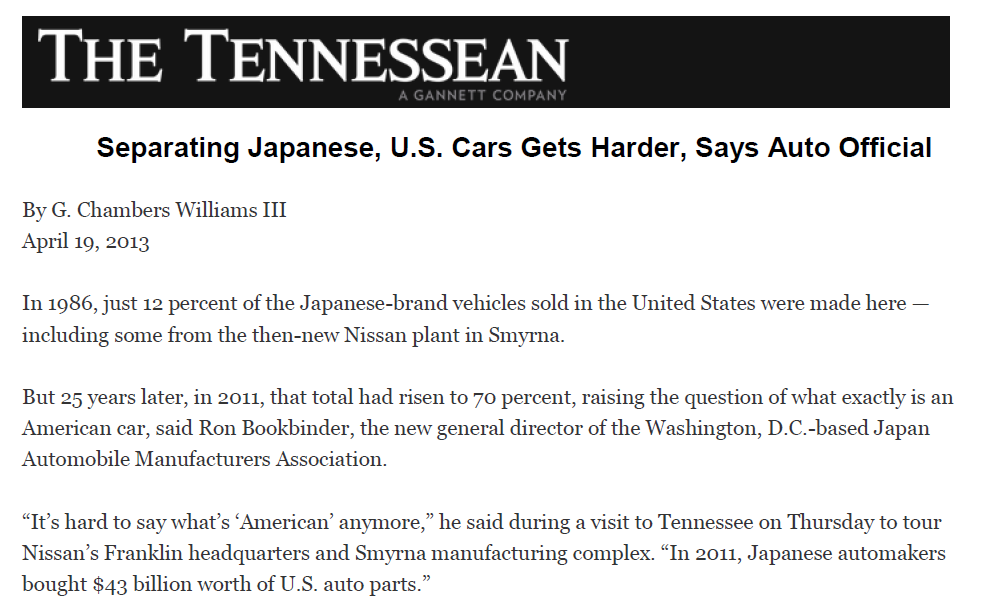By G. Chambers Williams III
April 19, 2013
In 1986, just 12 percent of the Japanese-brand vehicles sold in the United States were made here — including some from the then-new Nissan plant in Smyrna.
But 25 years later, in 2011, that total had risen to 70 percent, raising the question of what exactly is an American car, said Ron Bookbinder, the new general director of the Washington, D.C.-based Japan Automobile Manufacturers Association.
“It’s hard to say what’s ‘American’ anymore,” he said during a visit to Tennessee on Thursday to tour Nissan’s Franklin headquarters and Smyrna manufacturing complex. “In 2011, Japanese automakers bought $43 billion worth of U.S. auto parts.”
Japanese automakers have a combined investment of $34 billion in the United States, and in the latest twist, they have begun to export vehicles from their U.S. plants to other world markets, Bookbinder said.
Nissan is one of those, exporting some of the vehicles made at its plants in Smyrna and Canton, Miss., and engines from its powertrain facility in Decherd, Tenn., to South Korea and other countries.
Those exports will continue to grow “because of the global economy and favorable trade agreements,” Bookbinder said.
Alternative-fuel vehicles also are driving Japanese auto sales in the U.S., he said.
“In 2011, 80 percent of alternate-powered vehicles in the U.S. were Japanese brands,” Bookbinder said, including models such as the Toyota Prius hybrid and the Nissan Leaf electric car, which is being made in Smyrna.
“This goes along with the Japanese automakers’ concept of being energy efficient and environmentally sensitive,” he said. “But it’s also something that consumers want.”
TN ‘very welcoming’
Bookbinder, a New York native, has worked for the Japan Automobile Manufacturers Association for 17 years. He was appointed to the organization’s top job on April 1, and now he’s touring Japanese auto plants in the United States to get a firsthand look at their operations.
“In my years with (the association), I’ve seen a lot of changes, and especially in the past two years since the Japanese earthquake and tsunami,” he said.
The double tragedies in March 2011 severely curtailed Japanese auto production, and it took some time for it to resume normal levels, he said. Disruption of parts shipments from suppliers was a big part of the problem.
The automakers are now “trying to earthquake-proof their suppliers and diversify their sources” to prevent such widespread parts shortages in the future, Bookbinder said.
Whether Tennessee or the South will see more Japanese auto plants in the future is up to the individual automakers to decide, he said.
But, he noted, “Tennessee is very welcoming to Japanese investments.”
Original Source: The Tennessean
Click to view PDF


